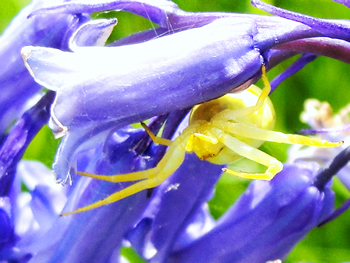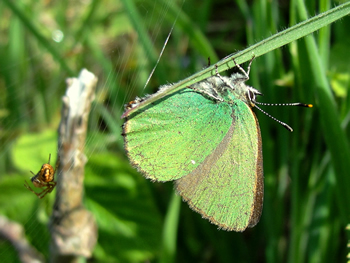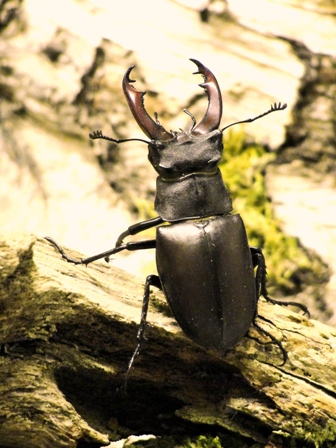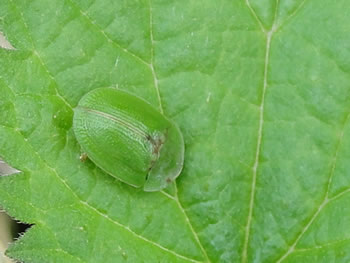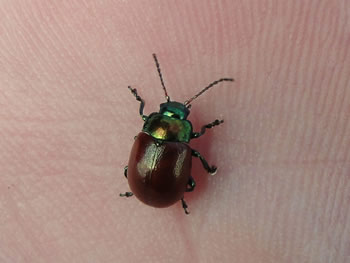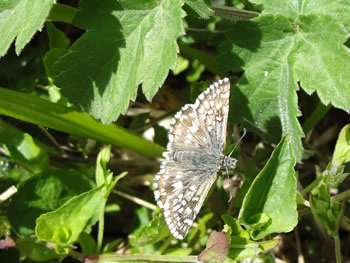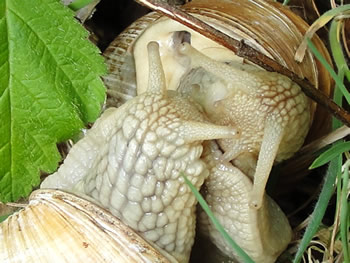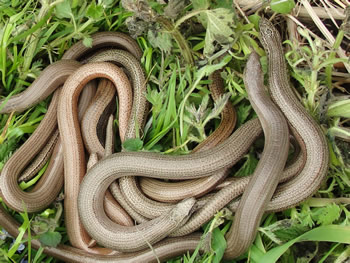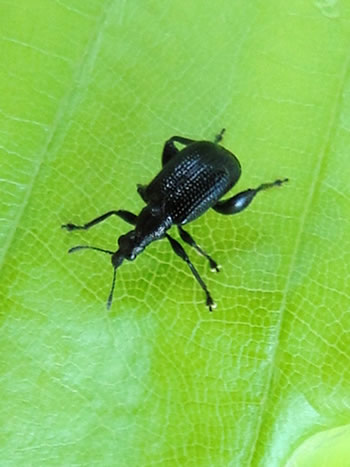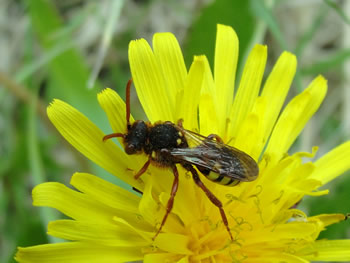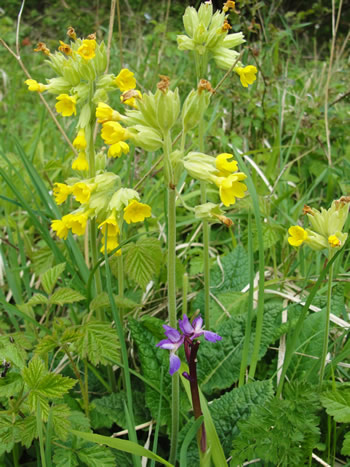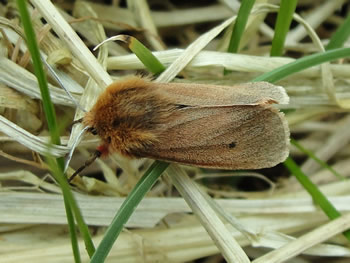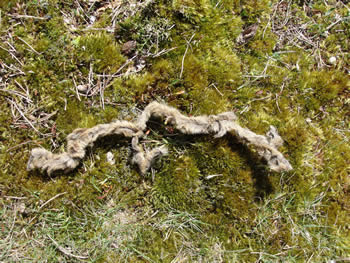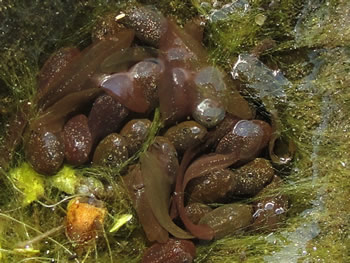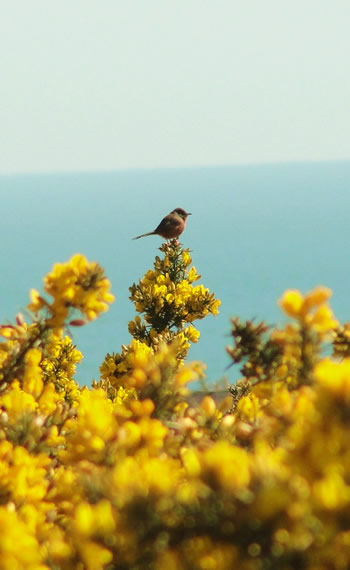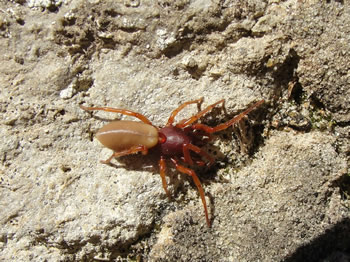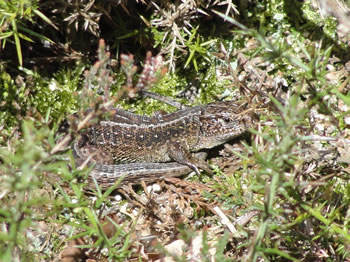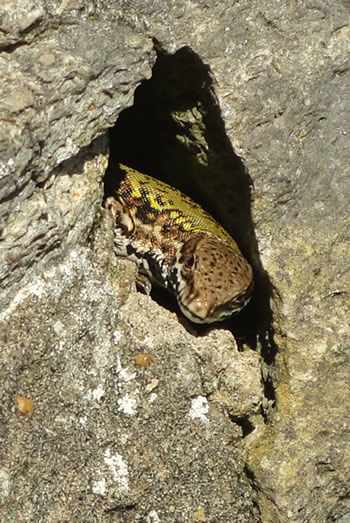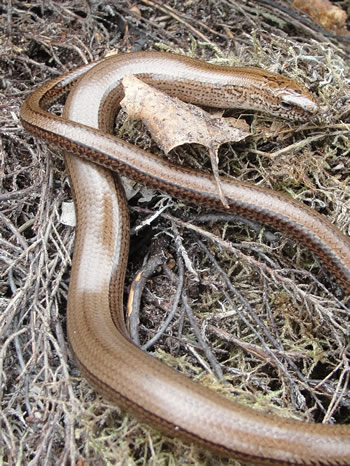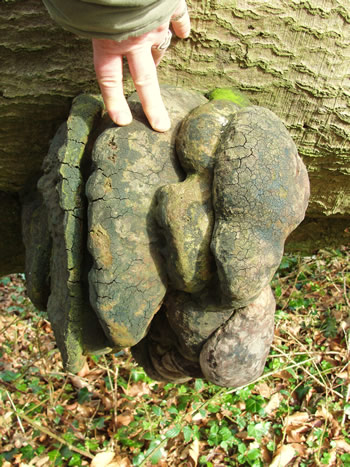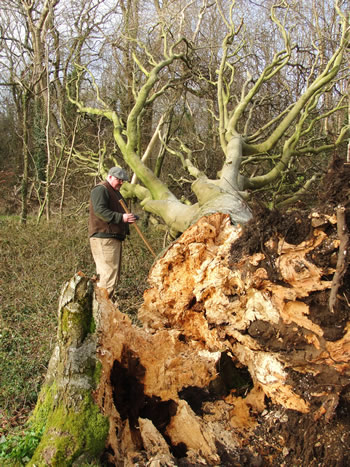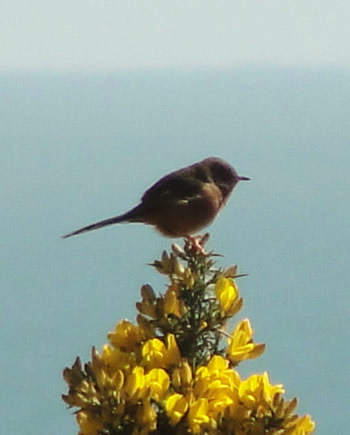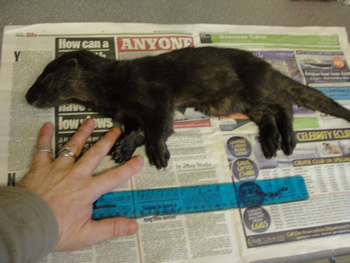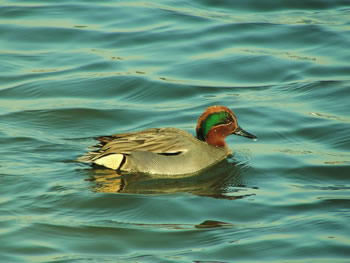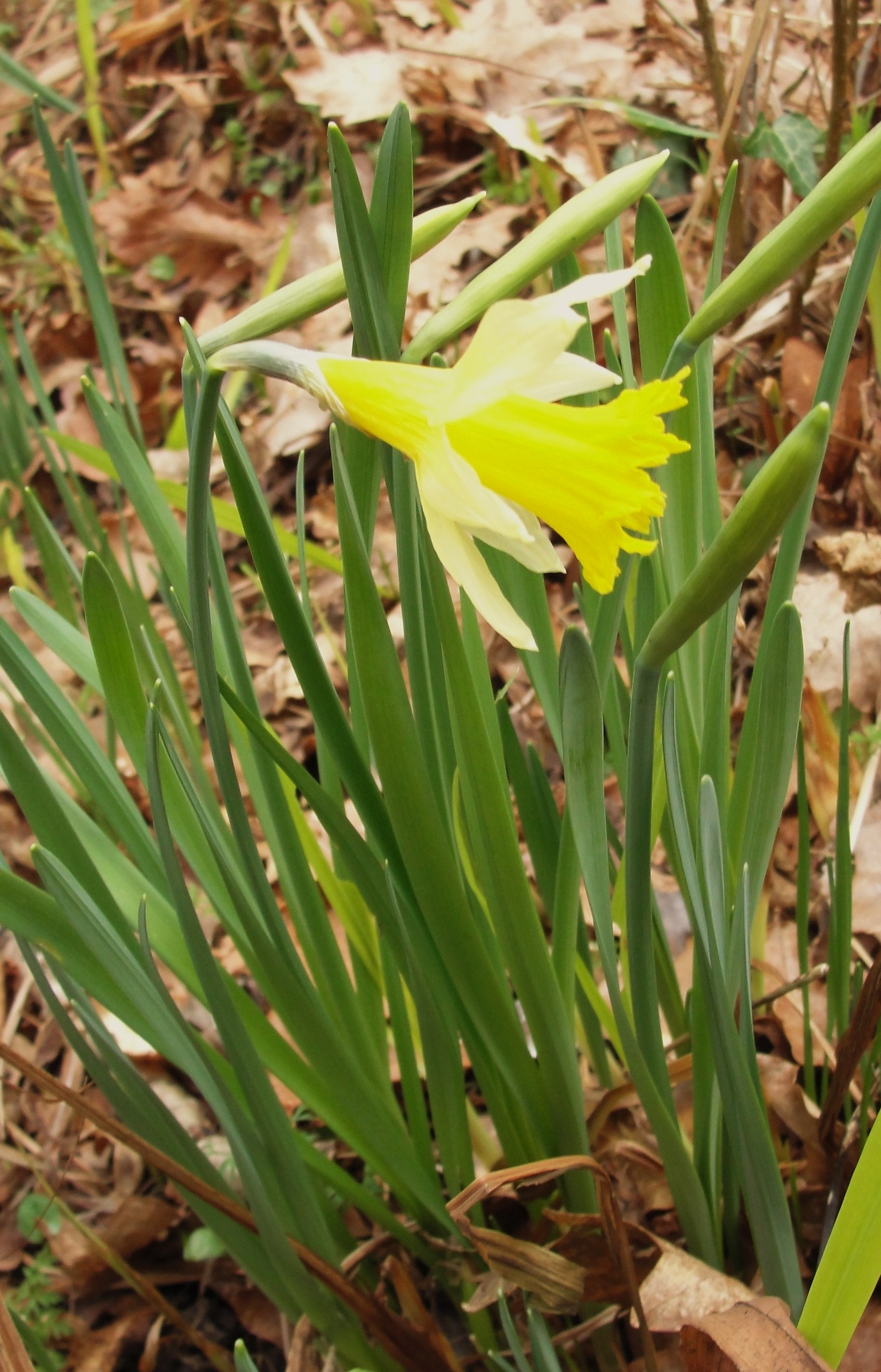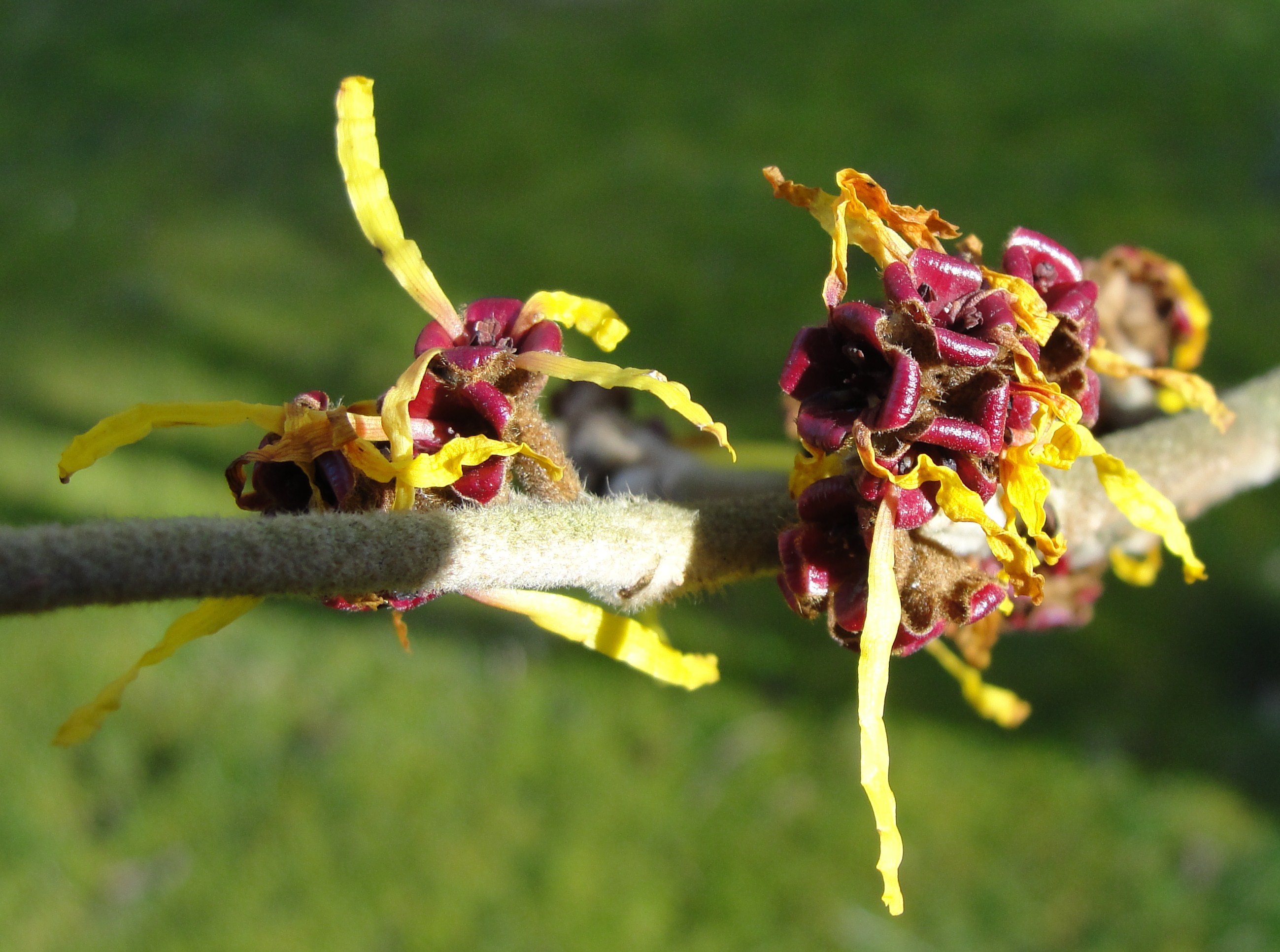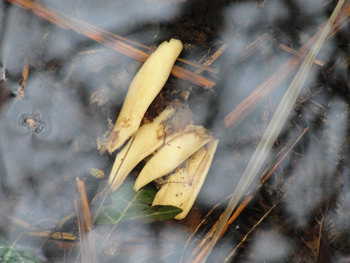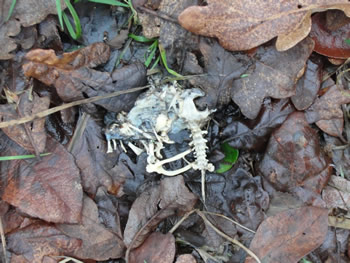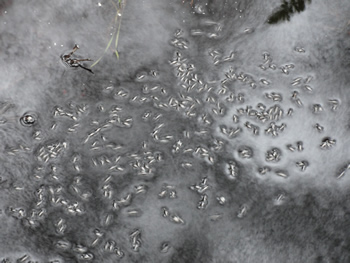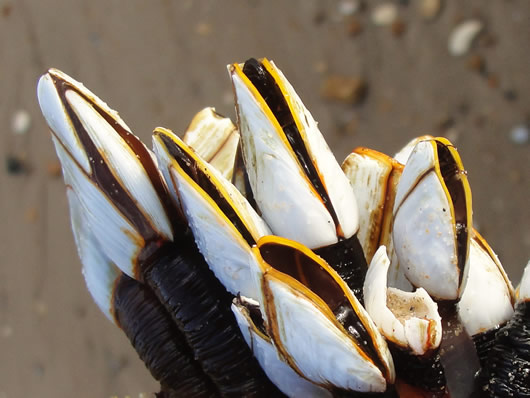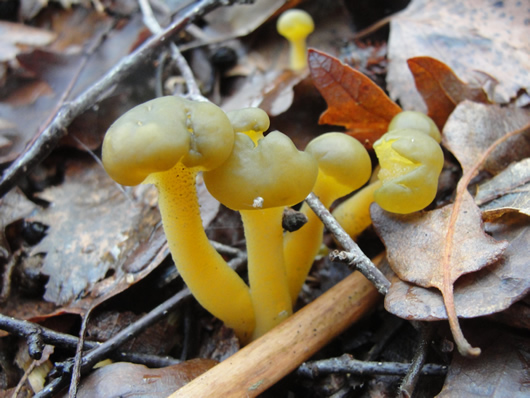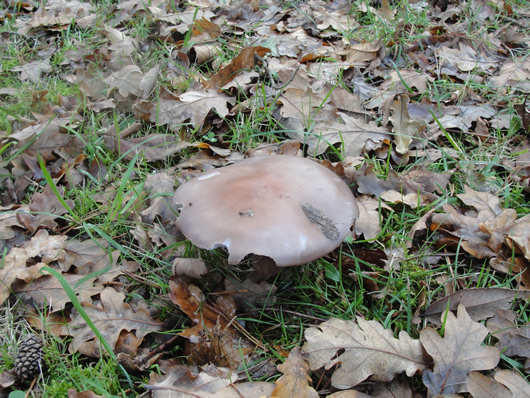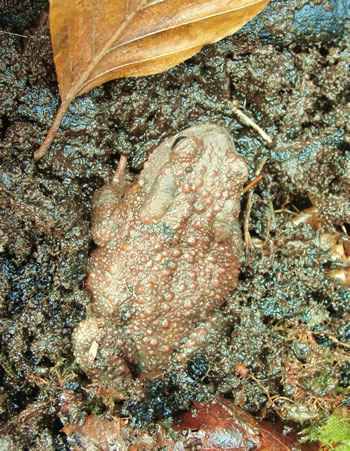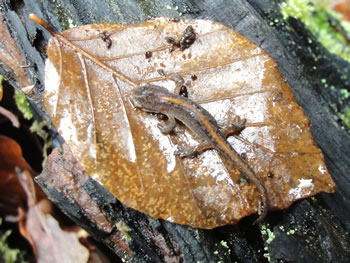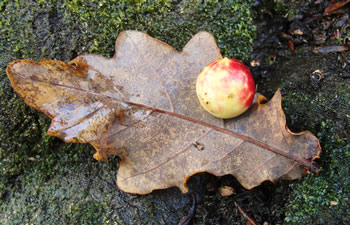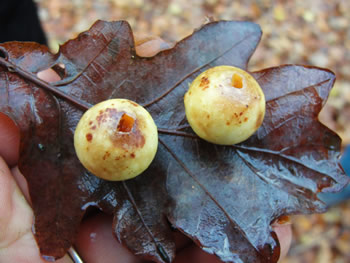Natterjack toads(bufo calamita) seem to mate at any time during early summer and spawn at any time. Between March and June,especially in warm muggy weather they can be heard at night giving chorus. during some days they can be out mating such as these individuals. In the picture below, two males try to copulate with the larger female.
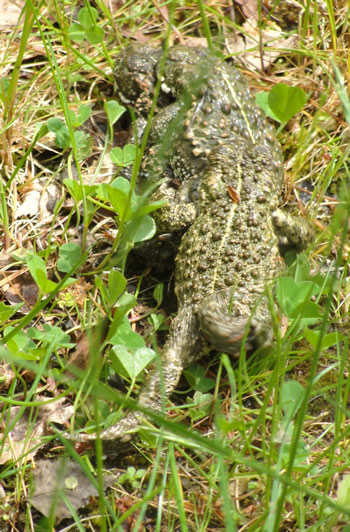
A lone male waits at the pool side and in the water are a few tadpoles. The dorsal light stripe is the distinguishing feature of this species.
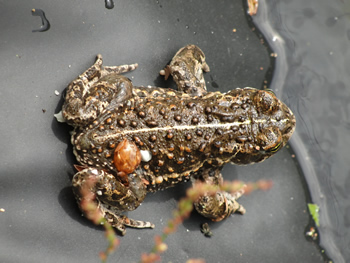 Velvet ants are more closely related to wasps. The wingless females jostle around the ground on heaths and the flying males search for them.This species (Mutilla europaea) is the more common two species found in England.They are parasites on bumble bees.
Velvet ants are more closely related to wasps. The wingless females jostle around the ground on heaths and the flying males search for them.This species (Mutilla europaea) is the more common two species found in England.They are parasites on bumble bees.
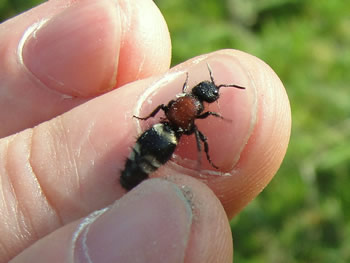 The common crab spider (misumena vatia) is to be found in both wild areas and gardens that are full of herbage.they can be found in any types of flowers especially white flowers. They are more often white but sometimes with green or pink stripes on the abdomen. This female has the much smaller male attached, mating.
The common crab spider (misumena vatia) is to be found in both wild areas and gardens that are full of herbage.they can be found in any types of flowers especially white flowers. They are more often white but sometimes with green or pink stripes on the abdomen. This female has the much smaller male attached, mating.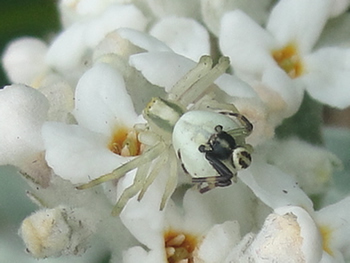
The yellow version is often to be found on bluebell flowers as well as yellow or white flowers.
The green hairstreak( callophrys rubi ) is flying around gorse and broom, perhaps one of the most striking among this group of small butterflies.
The female stag beetle (Cervus lucanus have emerged. They keep to the ground whilst the flying males fly at dusk on warm evenings to hunt for them.The one shown below is the female; she does not have the enlarged jaws or antlers.
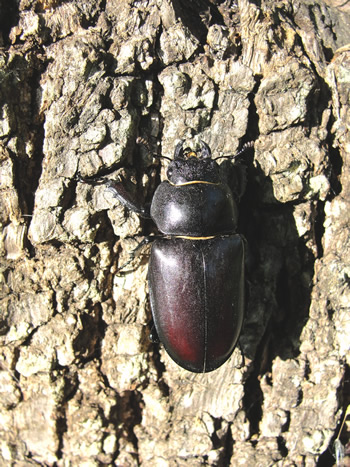 The male has a slightly different shape and has the enlarged jaws.They cannot bite as they only just meet at the tips but are very week and the beetle cannot exert much pressure.They are simply for combat with other males over females.It is said that the male feeds on tree sap if at all, yet I have not seen them feeding on anything and they do not seem to have much energy after a few days after emergence They seem to preserve energy by being slow and only moving when they need to.They will only fly in search of females which they vigorously guard with they’re antlers. Last night was the first time that I have found a male so far this year.The beetle is in serious decline throughout Europe, especially the UK. We must preserve dead trees for them instead of cutting them up and burning the wood. The silly health and safety laws get in the way with much wildlife conservation. Bats,birds, mammals and so many insect species are in very serious trouble.
The male has a slightly different shape and has the enlarged jaws.They cannot bite as they only just meet at the tips but are very week and the beetle cannot exert much pressure.They are simply for combat with other males over females.It is said that the male feeds on tree sap if at all, yet I have not seen them feeding on anything and they do not seem to have much energy after a few days after emergence They seem to preserve energy by being slow and only moving when they need to.They will only fly in search of females which they vigorously guard with they’re antlers. Last night was the first time that I have found a male so far this year.The beetle is in serious decline throughout Europe, especially the UK. We must preserve dead trees for them instead of cutting them up and burning the wood. The silly health and safety laws get in the way with much wildlife conservation. Bats,birds, mammals and so many insect species are in very serious trouble.

